What Does PASS Mean When Using A Fire Extinguisher?
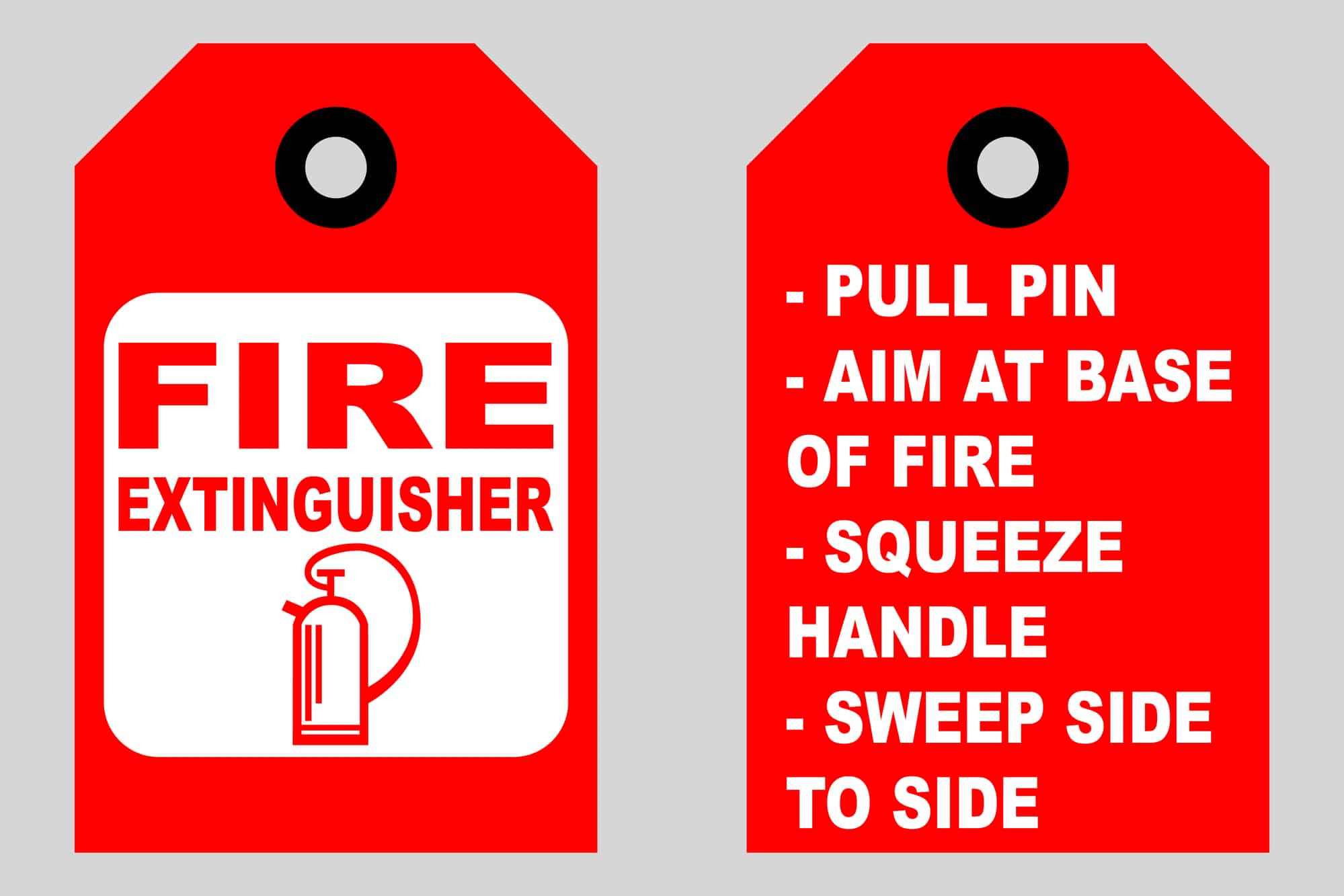
Remembering how to use a fire extinguisher in the middle of an emergency can be a daunting task, especially if you haven’t used one before. Thankfully, PASS is a helpful acronym to help remember the steps necessary when discharging a fire extinguisher. But what does PASS mean when it comes to fire extinguishers? Making sure that your employees, family, and friends are also trained on how to properly use a fire extinguisher is key. Education is important in keeping everyone safe in the event of a fire.
Below we explain which fire extinguisher is necessary for different scenarios, basic safety precautions, and what the letters in the acronym PASS mean.
Fire Extinguishers – What Are The Different Classes or Types?
Various types of fire extinguishers are divided by class to help contain different magnitudes of fires. For the one you’re using to be effective, it needs to be the right type for the emergency taking place.
There are five types of fire extinguishers:
- Class A: Puts out flames in ordinary combustibles like wood and paper.
- Class B: Used for flammable liquids, including grease, oil, and gasoline.
- Class C: Only suitable for those fires that are electrically energized.
- Class D: Only suitable for use on flammable metals.
- Class K: Used in kitchens and cooking environments where grease and fat are present
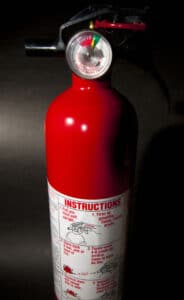
Fire Safety – Assess Whether a Fire Extinguisher is the Right Tool
Before operating a fire extinguisher, be sure to follow these fire safety guidelines. Following these rules can help save your life.
Make an assessment. If it is too big or appears uncontrollable, don’t risk your safety trying to fight it yourself. Evacuate the building and call 911 immediately. Understanding the signs of danger is vital in this step, and employees should be taught only to attempt to fight a small fire. The safety of all employees is the most important element of any fire situation – train your employees to handle emergencies, but also inform them that they aren’t expected to be heroes.
If it is small enough, signs suggest it will not get bigger, and you determine that you can easily extinguish it yourself, use the PASS method.
Hold the nozzle so that it points away from you once you discharge the device. Keep your back toward a clear exit so you can escape if it becomes bigger.
Keep a safe distance from the fire in case it spreads or reignites. Please pay attention to any signs that it is becoming uncontrollable.
Keep extinguishers stored on every level of the home or building in an accessible place for easy access in an emergency. This includes keeping one in kitchens and garages where emergencies are common and easily started.
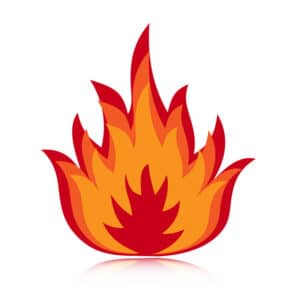
The Fire Triangle – What is That?
Four elements must be present for a fire to arise. Knowing about these elements is essential for putting one out. The four elements are:
- Oxygen: A certain level of oxygen is needed to sustain combustion. Without the necessary amount of oxygen, it could not maintain a spark.
- Heat: Once a certain level of heat is reached, it will raise the material to its ignition temperature, causing it to ignite.
- Fuel or a combustible material: These two must be present together to create a hazard.
- A reaction: The chemical or exothermic reaction is what starts the flames.
It’s important to receive training that provides a comprehensive understanding of how to use an extinguisher and assess emergency situations. You should also receive practical training so you have the opportunity to practice before you find yourself unprepared in an emergency. Also, if you are a business, you should have a set training schedule for all your employees to receive training on fire extinguishers.
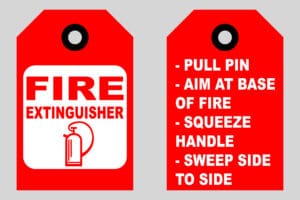
What Are the 4 Steps to Using a Fire Extinguisher? (The Meaning of “PASS”)
These are the four steps you need to take to use a fire extinguisher, best remembered using the acronym PASS. Each class of fire extinguishers has specific techniques, but PASS is the basis for all types. You need to be aware of the correct procedures to help everyone get to safety.
PASS stands for:
- P: Pull out the safety pin. A small pin on the device will let you discharge the extinguisher. You must pull it out to break the tamper seal before moving on to the next step. Do not pull it until you aim the fire extinguisher correctly.
- A: Aim at the base. You have to aim at the base of the fire because it’s the source of the burning. Aiming anywhere else will not be as successful. This is where oxygen adds to the temperature and adds fuel, causing the flames.
- S: Squeeze the handle of the extinguisher that the pin was removed from. This will release the extinguishing agent. Squeeze handle slowly and evenly so that it works as effectively as possible.
- S: Sweeping motion. Sweep the extinguisher hose from side to side as you squeeze. Keep it pointed at the base of the fire the entire time you sweep until it’s safely extinguished. Cover all of the areas it may spread to as you sweep.
When going through refresher training for your staff (which you should do annually), just tell them to “Remember PASS.”
How do RACE and PASS Differ?
RACE and PASS stand for two ways to use a fire extinguisher. The RACE acronym differs from the word PASS but has the same intention of keeping people safe while reducing damage and is particularly popular in hospital settings.
- R: Remove or rescue everyone from the area. Hospital employees are responsible for getting patients and coworkers away safely. It is vital that you do not attempt to fight it. Otherwise, you could lose your life.
- A: Alarm everyone of the hazard. This includes alerting security, pulling the fire alarm, and calling 911.
- C: Confine the flames to where they are and make sure everyone is away.
- E: Extinguish/Evacuate the area. Only hospital personnel with training should try to fight it before emergency personnel arrives.
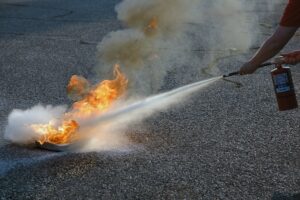
Using Fire Extinguishers The Right Way
Being familiar with the acronym PASS and fire safety rules before discharging a fire extinguisher will keep you safe. Remember the signs of danger and try to remain calm in the event of a fire. When you’re in a calm mindset, you can better complete the necessary steps to accomplish your goal.
Following professional advice resources for minimizing damage during an emergency and keeping people safe is crucial. However, you should also contact a fire professional in any situation that may require the use of fire extinguishers or other services in an emergency. Even if you can minimize the damage with a fire extinguisher, bringing professional emergency services is best.